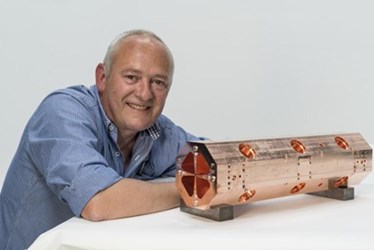CERN Miniaturizes Linear Accelerator For Medical Applications

Scientists from the European Organization for Nuclear Research (CERN) have taken the technology used to create the Large Hadron Collider (LHC) and made it small enough to be installed in hospitals. A miniature linear accelerator (mini-Linac), said developers, could be used for future cancer treatments, as well as the production of radioisotopes used in medical imaging and sterilization of medical equipment.
The LHC, an international effort that took thousands of scientists decades to build, has a 17-mile circumference and a depth that ranges from 164 feet to 574 feet underground. Shrinking that kind of technology into a mini-Linac 6.5-feet long represented a challenge that required new ideas about mechanics and radiofrequency.
Maurizio Vretenar, coordinator of the mini-Linac project, said his team was confident that the mini-Linac could be achieved after years of developing the Linac4, a device 262 meters long that will be installed in 2020 and be used to boost negative hydrogen ions to high energies.
“We knew the technology was within our reach,” said Vretenar in a CERN press release.
So far, only one of four modules needed to complete the mini-Linac is finished, but Serge Mathot, an engineer at CERN, says that one module is enough to validate the construction plan and prove the concept will work.
The finished device will function as a radiofrequency quadupole (RFQ), which accelerates and focuses low-intensity beams of charged particles with no significant losses. According to scientists, this makes the device the perfect injector for a new generation of cancer treatments that fight tumors with protons.
The National Association for Protontherapy explains that these new methods can offer a much more targeted approach to radiation. By zeroing in on the tumor, oncologists can use higher doses than are possible with traditional methods, which have to be mindful of surrounding healthy tissue. Protontherapy offers the same advantages of radiation with fewer side effects.
Furthermore, CERN scientists say that their mini-Linac could be used to produce radioisotopes. According to the World Nuclear Association (WNA), tens of millions of procedures using radioisotopes are performed each year and, as technology advances, the demand for them is increasing.
Most medical radioisotopes are sourced from relatively few research reactors around the globe, and their transport to hospitals is complicated and potentially hazardous. By having the mini-Linac on site, hospitals can produce a wider variety of radioisotopes on demand, said CERN scientists.
The WNA values the global radioisotope market at $4.8 billion.
